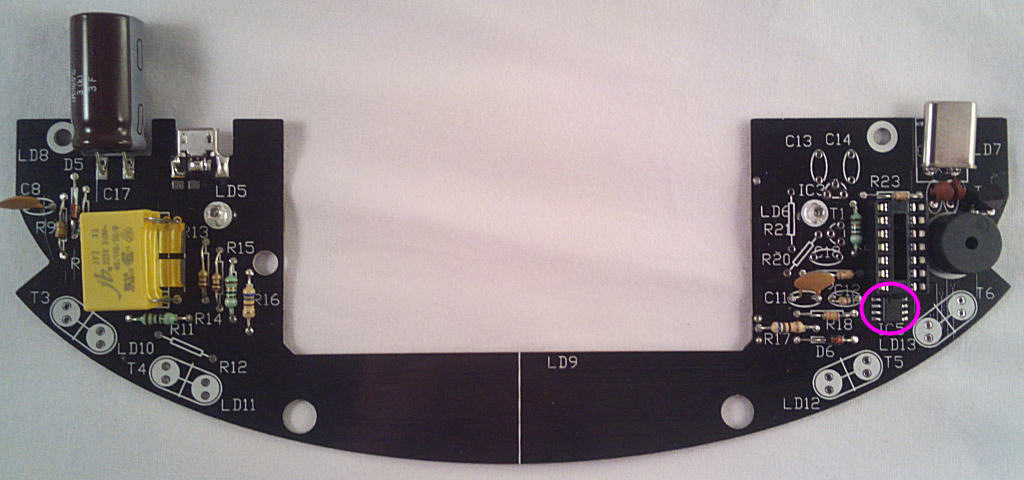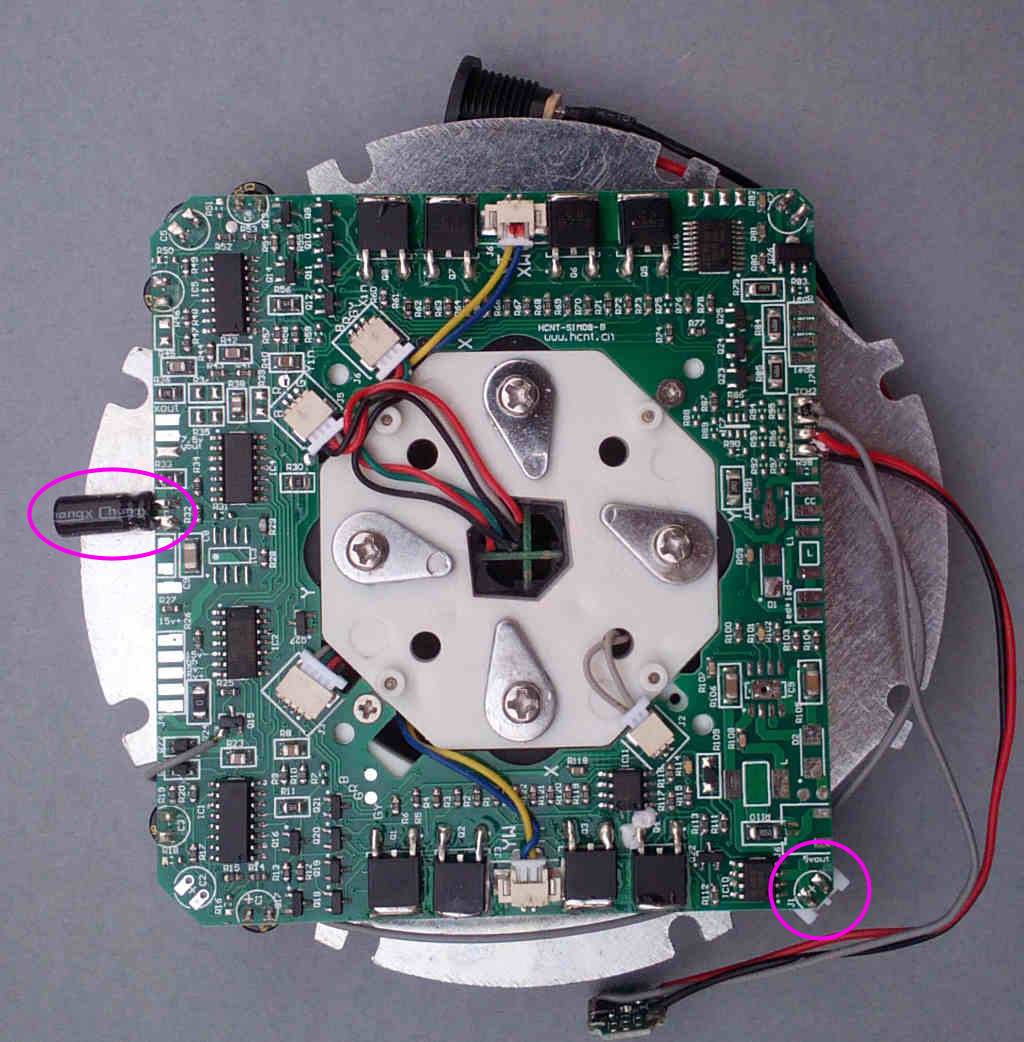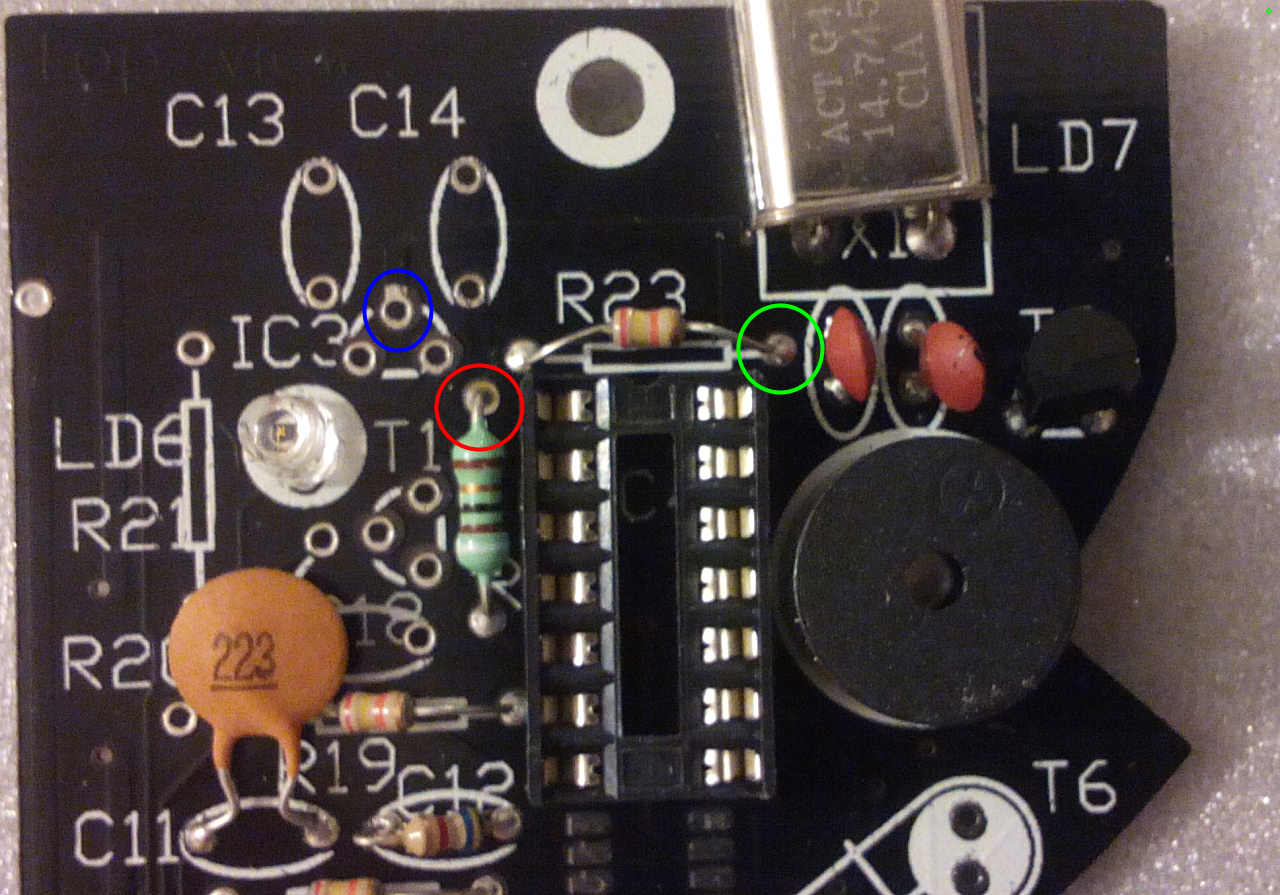Page 3 of 3
Re: 2 - PCB Assembly
Posted: Sat Dec 02, 2017 6:45 am
by Tony
Finally for now the small EEPROM memory (24c64) IC5, this holds program updates for verification before they're written to the microcontroller. The pin 1 mark faces UP (some ICs have a bevelled edge to indicate the pin 1 side, that faces left if so):


Re: 2 - PCB Assembly
Posted: Sat Dec 02, 2017 6:52 am
by Tony
Remove the 15V socket and any tagged-on components from the levitation module if fitted:


Re: 2 - PCB Assembly
Posted: Sat Dec 02, 2017 6:55 am
by Tony
Re: 2 - PCB Assembly
Posted: Sun Dec 03, 2017 1:14 am
by Tony
Using an offcut of wire from the 15V plug, link these points under the PCB:

Re: 2 - PCB Assembly
Posted: Sun Dec 03, 2017 1:16 am
by Tony
Solder 2 offcuts of wire to the 2 pads just below the USB socket - these are in series with the incoming 15V supply and will be used to monitor current during testing. Connect a multimeter on a 500mA or 1A range to the 2 wires.

Re: 2 - PCB Assembly
Posted: Sun Dec 03, 2017 1:18 am
by Tony
Solder 3 wire offcuts to the touch-switch module connection pads:

Trim the wires to ablout 1" in length, then solder them to the marked points on these components at the right hand side of the base PCB:

BLUE - GND, RED - VCC, GREEN - I/O. I would also recommend adding a 330-470u 6.3V+ capacitor across Vcc and GND on the module. *NOTE This is needed as the touch switch will activate randomly otherwise so consider it essential.
Feel free to experiment with your own switch - you could add 433mhz remote control for example, the PIC input expects an active low signal.
Re: 2 - PCB Assembly
Posted: Sun Dec 03, 2017 1:19 am
by Tony
Now it's time for the first power-on test. Connect the base to the power PCB using the supplied micro-USB cable and switch on. The current reading should be about 100mA, more if one of the LEDs randomly decided to light up. It shouldn't be more than about 140-160mA if so.
Switch off and fit IC4, then switch on again. The current reading should be almost the same, the LEDs will flash green for a second then go out. Put your finger near the touch switch, the LED on it should light up and LS1 will start to beep with a tone increasing in frequency the longer the switch is held.
Try carefully floating the small magnet included in the 'relay' kit box, as it's a bit light just now it will tend to slip easily to one side but should still float with care.

Now jump to the coil winding instructions for the rest of the assembly.













